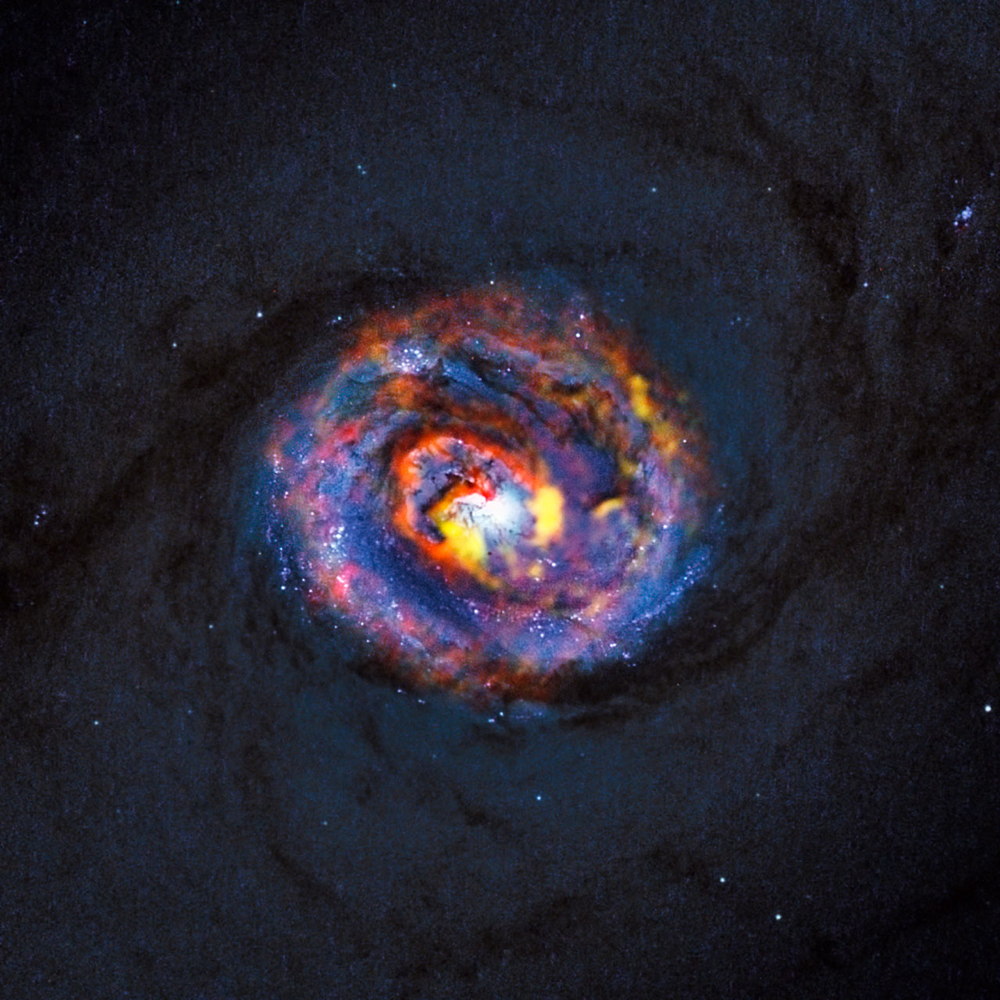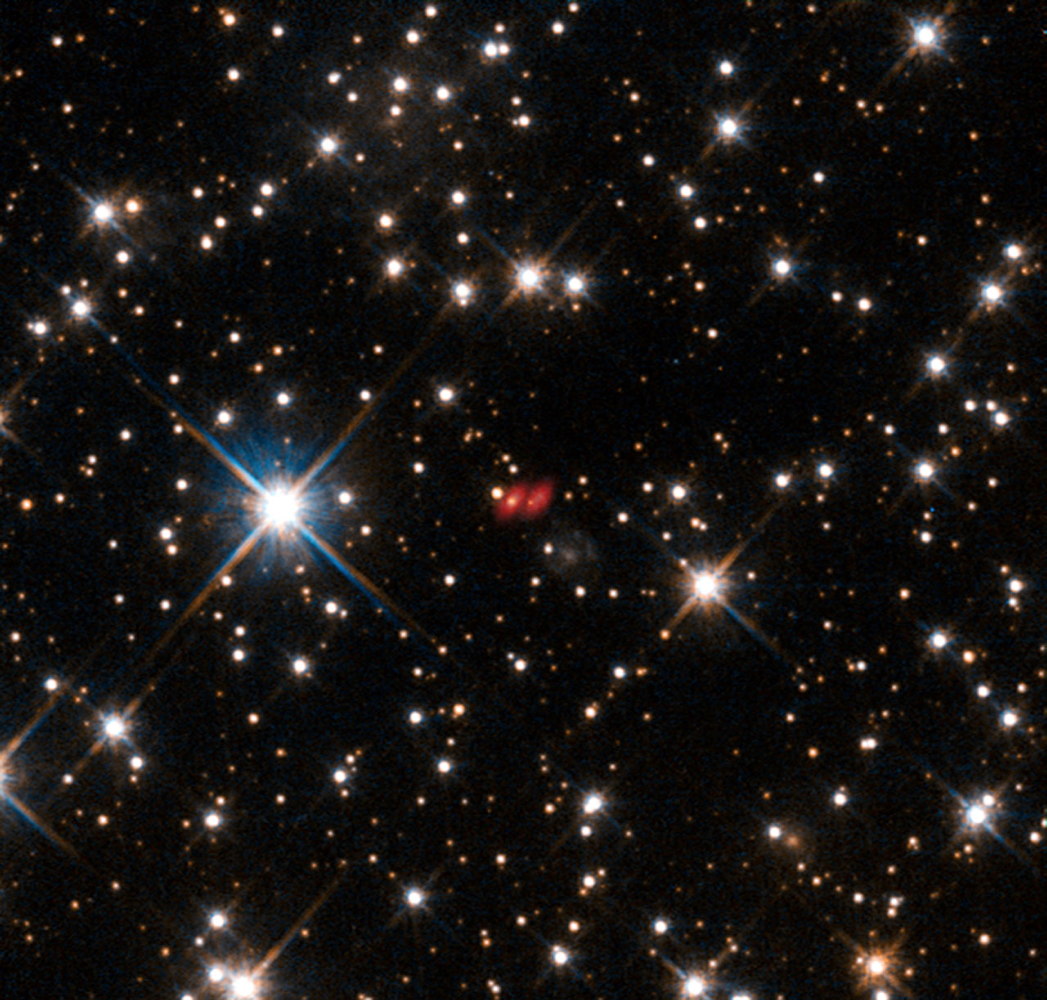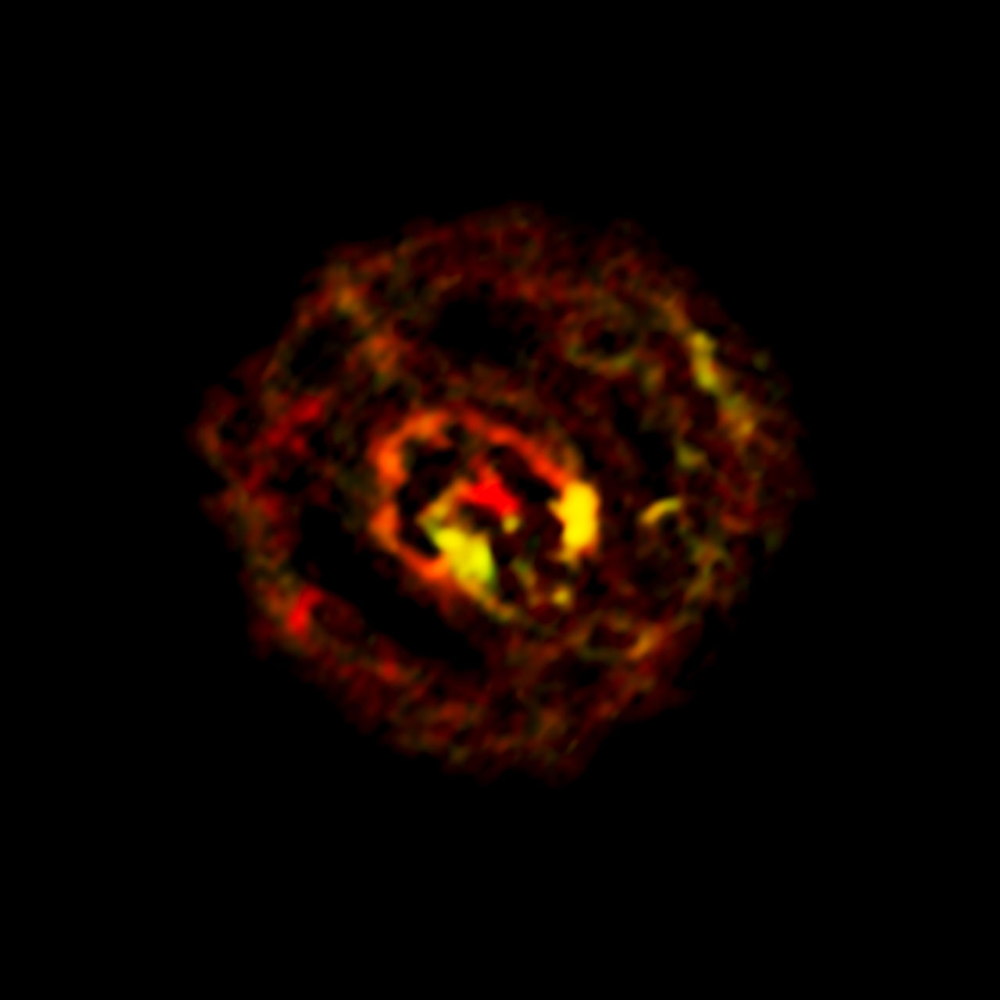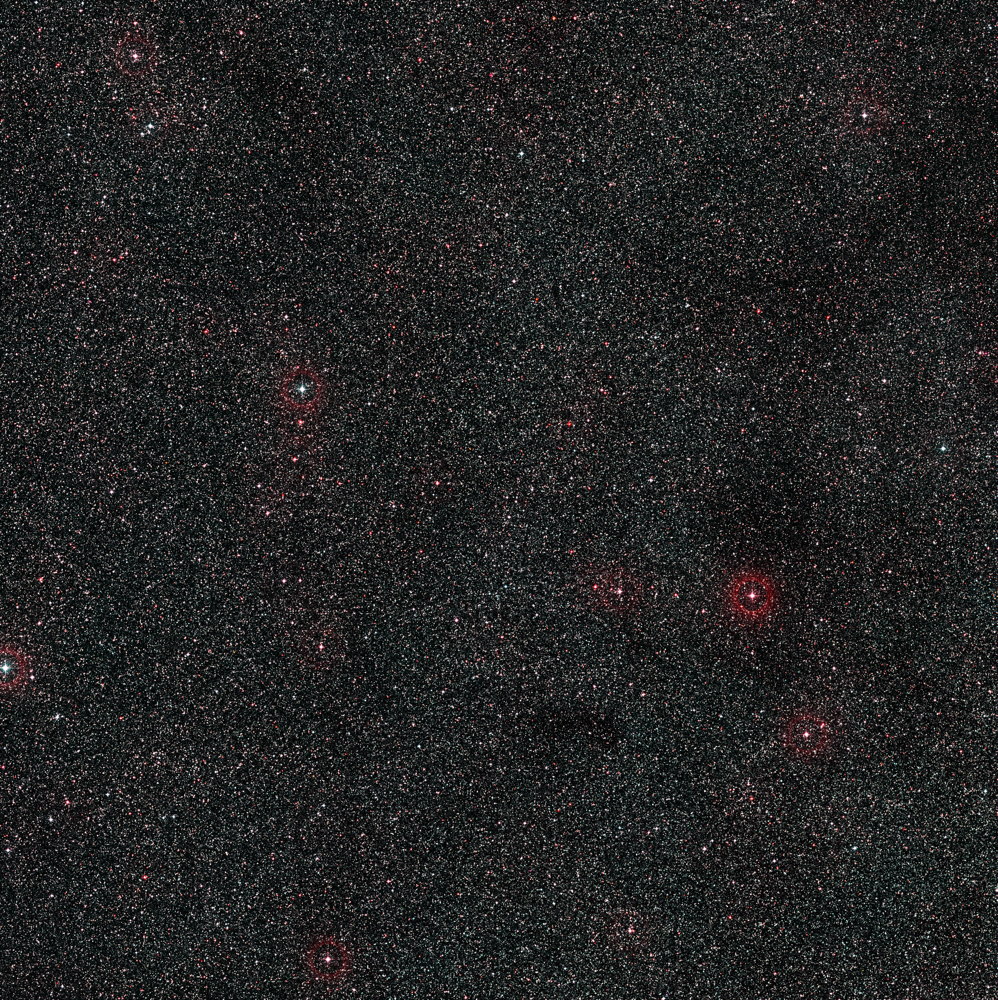'Black Hole Indigestion' Captured by Giant Radio Telescope (Photos)

A powerful radio telescope in Chile has peered deeply into the universe and captured an incredible sight: an ancient black hole chowing down on a massive snack.
New photos released by the European Southern Observatory (ESO) show a distant active galaxy called PKS 1830-211 eating huge amounts of matter, boosting its super-energetic jets of material to extremely high levels. You can watch a video fly-through of the two new black hole discoveries provided by ESO.
The light coming from the distant cosmic object was actually emitted when the universe was 20 percent as old as it is now, ESO officials said. The Atacama Large Millimeter/submillimeter Array (ALMA), the world's largest ground-based telescope array, made the new observations. [Meet ALMA: Amazing Photos from Giant Radio Telescope]
"The ALMA observation of this case of black hole indigestion has been completely serendipitous," Sebastien Muller, co-author of a study about PKS 1830-211, said in a statement.
"We were observing PKS 1830-211 for another purpose, and then we spotted subtle changes of color and intensity among the images of the gravitational lens," Muller added. "A very careful look at this unexpected behavior led us to the conclusion that we were observing, just by a very lucky chance, right at the time when fresh new matter entered into the jet base of the black hole."
Breaking space news, the latest updates on rocket launches, skywatching events and more!
The gravitational lens effect in this case was created when light from PKS 1830-211 passed by a massive galaxy, distorting the image for observers on Earth. The huge foreground object warped space, causing the light from PKS 1830-211 to take a twisted path toward our planet.
The ALMA radio telescope, which consists of 66 antennas, is also responsible for a second recent black hole find.
The powerful telescope gathered new data about a molecular gas cloud located around NGC 1433, a quiet galaxy relatively close to the Milky Way. It takes about 30 million years for light from NGC 1433 to reach Earth, ESO officials said.
"ALMA has revealed a surprising spiral structure in the molecular gas close to the center of NGC 1433," Françoise Combes, the lead author of the molecular cloud study, said in a statement. "This explains how the material is flowing in to fuel the black hole. With the sharp new observations from ALMA, we have discovered a jet of material flowing away from the black hole, extending for only 150 light-years. This is the smallest such molecular outflow ever observed in an external galaxy."
The new observations are only the beginning for ALMA's work with supermassive black holes. Combes and his team are starting to study other active galaxies, and more observations of PKS 1830-211 are planned in the future.
"There is still a lot to be learned about how black holes can create these huge, energetic jets of matter and radiation," Ivan Martí-Vidal, lead author of the PKS 1830-211 study, said in a statement. "But the new results, obtained even before ALMA was completed, show that it is a uniquely powerful tool for probing these jets — and the discoveries are just beginning!"
Both of the new studies are detailed in the Oct. 16 issue of the journal Astronomy & Astrophysics.
The $1.3 billion ALMA telescope is managed jointly by ESO, the National Astronomical Observatory of Japan and the National Radio Astronomy Observatory. ALMA officially opened for scientific business in March, though it won't reach full sensitivity until the end of the year, when all 66 antennas are expected to be working together.
Follow Miriam Kramer @mirikramer and Google+. Follow us @Spacedotcom, Facebook and Google+. Original article on SPACE.com.

Miriam Kramer joined Space.com as a Staff Writer in December 2012. Since then, she has floated in weightlessness on a zero-gravity flight, felt the pull of 4-Gs in a trainer aircraft and watched rockets soar into space from Florida and Virginia. She also served as Space.com's lead space entertainment reporter, and enjoys all aspects of space news, astronomy and commercial spaceflight. Miriam has also presented space stories during live interviews with Fox News and other TV and radio outlets. She originally hails from Knoxville, Tennessee where she and her family would take trips to dark spots on the outskirts of town to watch meteor showers every year. She loves to travel and one day hopes to see the northern lights in person. Miriam is currently a space reporter with Axios, writing the Axios Space newsletter. You can follow Miriam on Twitter.



